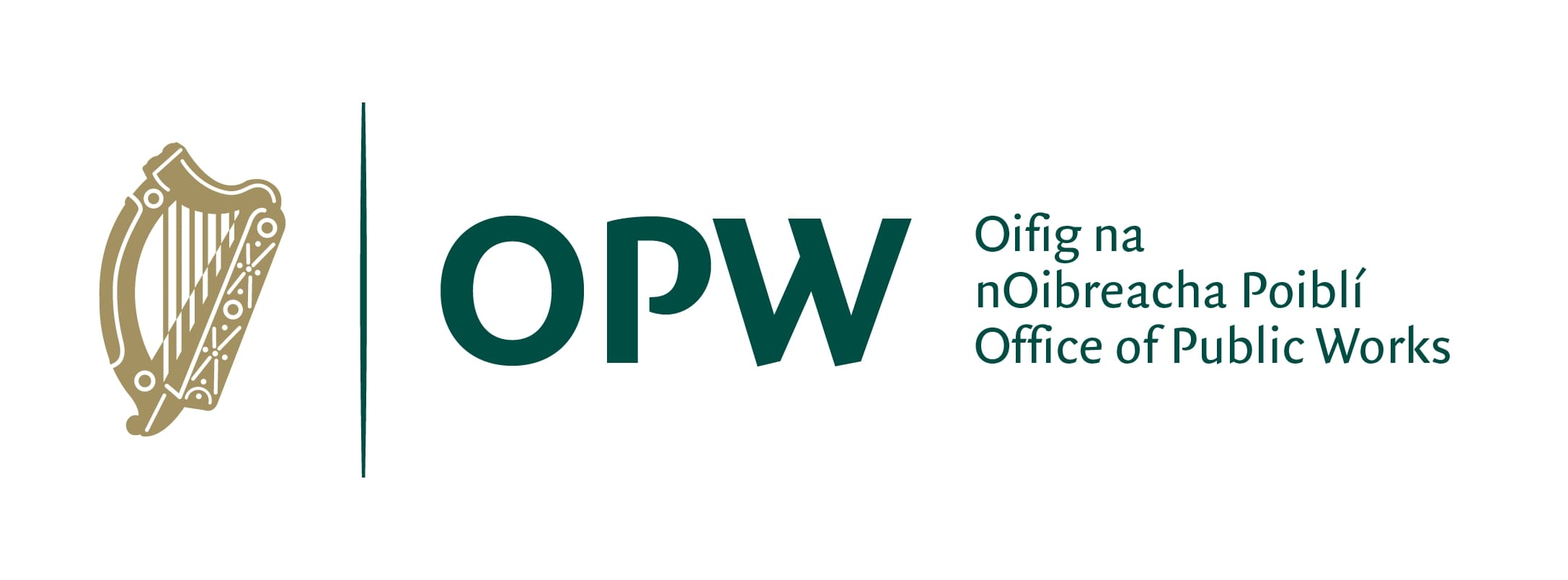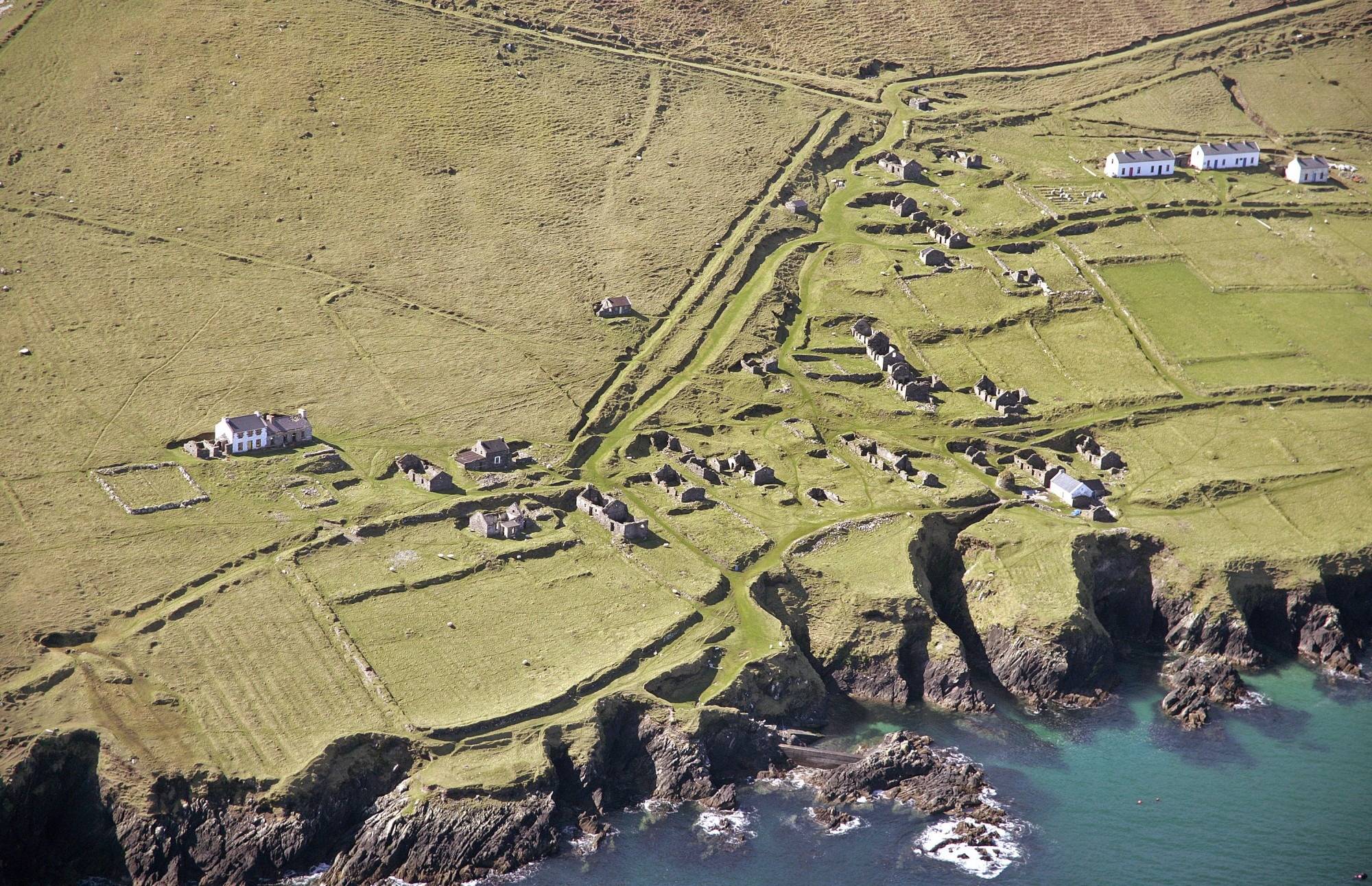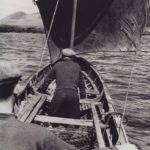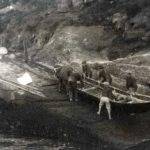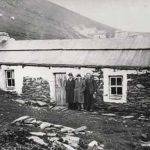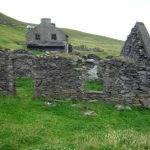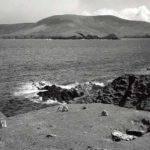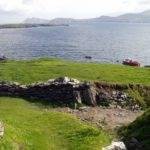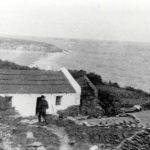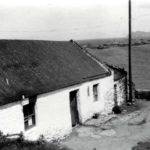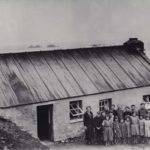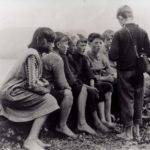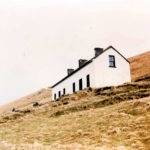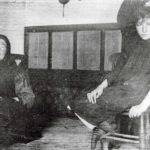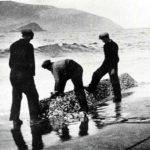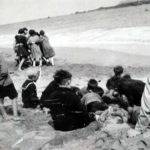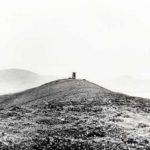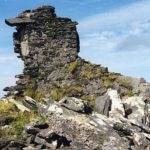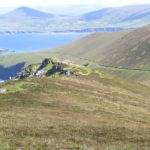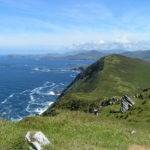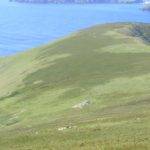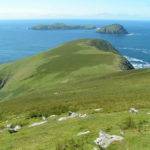Online Tour
The Island Harbour
The Island Harbour lies just below the village on the eastern side of the Island. The Congested Districts Board built a breakwater and slip at this natural cove in 1910. Many of the islanders helped with this work, including Tomás Ó Criomhthain and the English scholar Robin Flower. The harbour can only accommodate a few naomhóga (currachs) at any one time. The naomhóga were rarely left in the water in the harbour for long but were placed on their stáitsí (stands) just above the slip. These boats were made from a tarred canvas covering a wooden frame, and could be managed by a crew of three or four men.
- A naomhóg under sail. A sail was hoisted on the naomhógs during long journeys with favourable wind. Taken by Tomás Ó Muircheartaigh. Courtesy National Folklore Collection, UCD.
- Naomhogs coming into the slipway
Muiris Ó Súilleabháin’s House
Muiris Ó Súilleabháin’s house was typical of the older type of island house, built of stone mortared with clay and a felt roof. It is situated at Bun an Bhaile (the lower village) and faces south, with the gable end towards the sea. Muiris left the island in 1927 and became a member of the Gardaí.
- Muiris Ó Súilleabháin’s house.
- Ruins of Muiris’ house.
Rinn an Chaisleáin
This area is the reputed site of a stronghold of the local chieftain, Piaras Feiritéar, under whose control the Blasket Islands were, and who is said to have taken refuge on the Great Blasket during times of peril. No trace of the stronghold remains today. During the later periods of the island community the area served as an unconsecrated graveyard where unbaptised infants were laid to rest.
- Rinn an Chaisleáin and Sliabh an Fhiolair visible behind it
- Rinn an Chaisleáin
Tomás Ó Criomhthain’s House
Built in 1893 by Tomás himself, and situated at Bun an Bhaile (the lower village), the house nearest to the beach. A two-roomed house built of stone and mortared with clay, which had a later addition of an outhouse. The loft would also have been used for sleeping space. Tomás built this house shortly after his marriage, just a short distance from the house in which he grew up. According to Tomás’ own account he began to build his house in the depth of winter in 1893, and he had completed the work by mid-March, the beginning of the fishing season. He states that he carried out this work on his own but fortunately most of the materials required in the building were available close at hand.
- Tomás Ó Criomhthain outside his house.
- Tomás Ó Criomthain inside his house.
The Post Office
Situated at Bun an Bhaile (the lower village) and built in the early 1900s, this was the home of one of the Ó Cearnaigh households. The Post Office opened in 1941 with Seán Sheáisí Ó Cearnaigh as the post-master. The Island Post Office was the vital contact with the outside world in the declining years of the Island. A radio telephone link was in operation in the Post Office from 1941 until 1953. This meant that the islanders could contact the Post Office on the mainland parish of Dún Chaoin in times of emergencies or to send telegrams.
- The Blasket Post Office.
The National School
The schoolhouse is situated in the centre of the village and was built about the year 1864. Up to sixty children and two teachers attended the Blasket school in its heyday, but because of the declining population due to emigration, only six pupils remained at the school when it finally closed in 1941. The schoolhouse also served as a church, where Mass was said by visiting priests in the summer months, and where the Rosary was recited by islanders in the evenings.
- The island school, the schoolchildren, and the teacher Nóra Ní Shéaghdha (left), c.1933. © MacMonagle Archive www.macmonagle.com.
- ‘Look what I have!’ Children in the schoolyard, mid-1930s.
Peig Sayers’ House
Peig lived in one of the five ‘new houses’ that were built by the Congested Districts Board between 1908 and 1916. Her family, including her husband Patsy ‘Flint’ and son Maidhc, the poet, moved into this house from the lower village around 1912. In this house she entertained visitors and islanders alike with her vast repertoire of stories and anecdotes.
- Peig Sayers’ house, on the right hand side, built in 1910.
- Peig and her daughter Neilí in their house in 1924.
The White Strand
The White Strand had an important place in island life. Islanders and visitors alike used the beach for pleasure and relaxation, but swimming was hazardous due to strong currents. Some of the Spanish Armada of 1588 anchored off the White Strand, and the ship Santa Maria de la Rosa pulled anchor and was wrecked in the Blasket Sound. According to the account of one Spanish captain, water was sourced on the Great Blasket before setting off for Spain.
- Three men on the White Strand
- Muiris Mhaidhc Léan O Guithín (with the blonde hair), next to George Thomson
The Tower
This tower, like many of its type, was built by the British Government as lookouts for Napoleon Bonaparte and his navy, and the perceived threat that he would invade Ireland as a means to attack the British Crown. It was the largest and highest building on the island, and it must have been a wonder to the island as it was being built. The tower was probably operational until 1815 or so, as the Napoleonic threat receded around that date. It is unknown how many soldiers and signalmen were stationed in the tower at any one time due to the comings and goings to this exposed site. The tower was destroyed by lightning in the 1930s.
- The Tower on the Island, taken in 1934
- Ruins of the Tower today
The Fort
The Fort is one of the archaeological sites most associated with the Great Blasket. It is situated on a clifftop close to the summit of Cnoc a’Dúna on the northern side of the island, roughly a third of the way to the back of the island. It seems to be an ancient site, although not much is known about it. What can be said with certainty is that remains like these signify settlement on the island from an early date.
- The Fort
- The Fort
The Bright Dwellings
These are mounds of stone, known as ‘The Bright Beehives’, whose original size and design is impossible to distinguish. They are scattered on a plain behind the Cró, the highest point on the island which stretches for half a mile. Because the clocháin are at the opposite end of the island to the pier and village, few people get to see them. The site commands outstanding views of the surrounding seas and islands.
Tomás Ó Criomhtháin in his book, Dinnsheanchas na mBlascaodaí, states that “there are many works around these beehives. People are only guessing as to the origin of the same beehives – some people say holy men, more say the Vikings. The grass and the turf has risen high above them, but if they were cleared down to the foundations, people might get some meaning out of them.”
- The Bright Dwellings
- The Bright Dwellings
